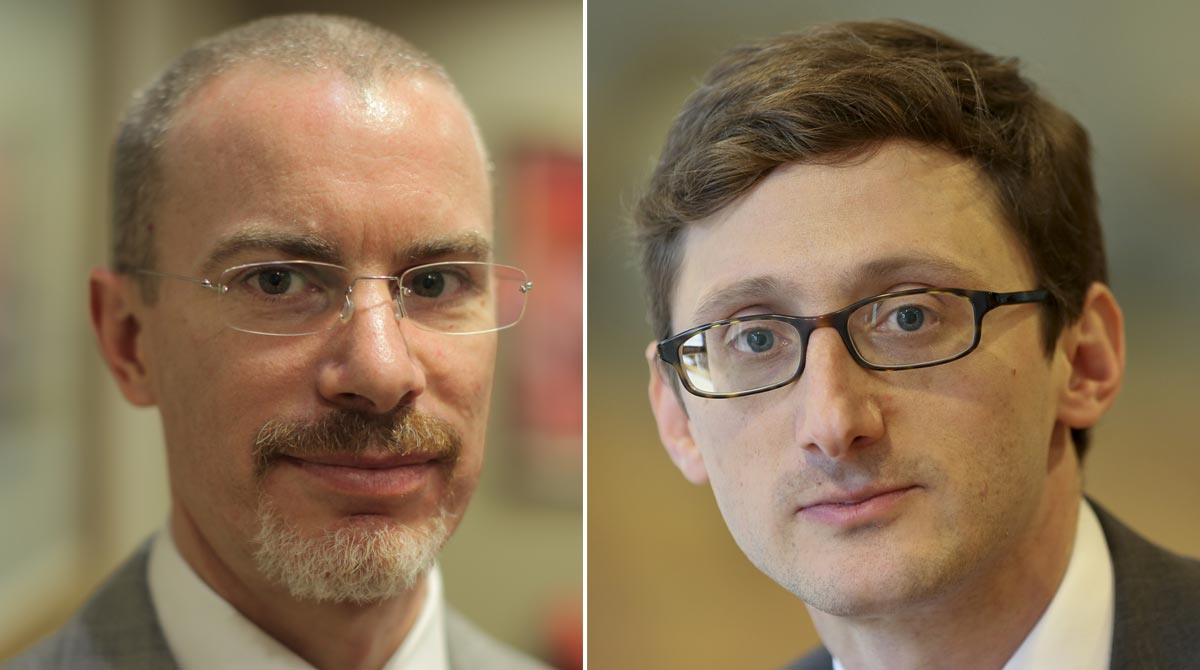Emerging Markets: which countries are powering ahead post-covid

India has experienced a powerful demand recovery in recent months while Brazil, Mexico and South Africa have been more mixed.
Here James Syme and Paul Wimborne (pictured above) — managers of Pendal’s Global Emerging Markets Opportunities strategy — explain their latest EM thinking.
WE HAVE had a steadily evolving interest in the traditionally higher-beta emerging markets, as followers of our views will know.
We see domestic recoveries that have a good distance to run based on current trade balances and a reset to credit and demand cycles that 2020 created.
Some powerful upward moves in terms of trade (the ratio of export prices to import prices) in some of these economies are supporting those trade balances.
First among these has been India.

India has experienced a powerful demand recovery in recent months after a weak economic environment in 2019 and the effects of Covid-19 lockdowns.
PMIs have generally been printing above 55 and vehicle sales remain strong. The recovery began into the autumn festive season. Companies were unsure if it would last, but it has.
In particular companies are reporting strong demand and a reduced need to fund promotion and associated expenses to generate sales.
The recovery has been driven by:
- Urban demand — which slowed in 2019 and 2020, even for FMCG companies, but has
revived as Covid cases continue to fall - Premium segments as disposable incomes and consumer confidence improve
- Real estate — helped by lower mortgage rates and improved affordability.
Recoveries in Brazil, Mexico and South Africa have been more mixed. But some data points such as Brazilian bank-lending growth and South African retailer results show firm recoveries.
We particularly note the potential for these recoveries to continue for much longer than markets are pricing in. This suggests continued positive surprise in corporate results can drive equities and currencies higher for longer in these countries.
Where to take care
To be clear, we see these countries as the least understood and consequently most attractive part of Emerging Markets.
Yet with the exception of India we have been relatively cautious about adding exposure — even as these economies recover and portfolio capital that fled in the first half of 2020 returns.
Why?
There are two main reasons for short-term caution despite our longer-term optimism.
First, there are significant challenges from Covid second waves in some of our preferred markets.
Brazil has a major second wave underway. This is centred on the city of Manaus where a new variant is causing the majority of infections.
South Africa also had a second wave with a new variant at its heart, though case data there is now rapidly improving. Mexico’s second wave has been much more severe than its first — though again case data is now improving.
These second waves, and others, may lead to a short-term setback in economic recoveries and investor optimism.
Secondly, we are concerned about the potential for a short-term inflationary bulge as rising commodity prices meet the year-on-year effect of the March/April 2020 base.
The Brent oil price per barrel was US$17.30 at the end of March 2020, US$40 at the end of January 2021 and nearly US$60 at the time of writing. Soybeans (based on the Chicago bushel price) traded between US$6.50 and US$7 in the first few months of 2020, but are nearly US$14 at the time of writing.

The same pattern exists for diverse commodities — from wood pulp to copper, from wheat to ethylene.
In the higher beta emerging markets, stronger currencies have (and can continue to) offset the domestic inflationary effects. But we are concerned there is a risk of more challenging inflation prints in coming months.
We are particularly concerned about Brazil and Russia where inflationary pressures were starting to emerge before Covid hit. However differing reaction functions are more likely to see rate hikes and slower growth in Russia — and currency and bond market weakness in Brazil — should this occur.
Neither of these issues reduce our long-term enthusiasm for these markets.
India has been a powerful example of what a domestic demand recovery can mean for equity investors. Those same commodity prices are highly supportive of economic fundamentals and financial markets in more commodity-sensitive EMs such as Brazil, Mexico, South Africa and Russia.
We continue to look to increase our exposure to markets such as these. But we also look to be tactical in timing our portfolio shifts.
James Syme and Paul Wimborne are senior portfolio managers and co-managers of Pendal’s Global Emerging Markets Opportunities fund.
Find out more about the fund HERE.
Pendal is an independent, global investment management business focused on delivering superior investment returns for our clients through active management.

